Excerpts from Jim Conrad's
Naturalist Newsletter
from the June 2, 2013 Newsletter issued from the Frio Canyon Nature Education Center in northern Uvalde County, southwestern Texas, on the southern border of the Edwards Plateau; elevation ~1750m (~5750 ft); N29.62°, W99.86°; USA
HEDGE PARSLEY
One of the most common weeds in the grass around the cabin is producing diffuse little sprinkles of white flowers atop long, nodding peduncles, as shown below, in the grassy tangle at the base of the big spineless cactus in the backyard:
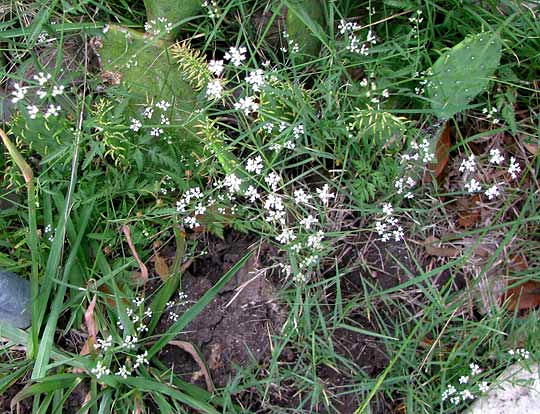
If you get down and look at individual flower clusters you see that they're fireworks-like, each little speck of white a separate flower, as shown below:
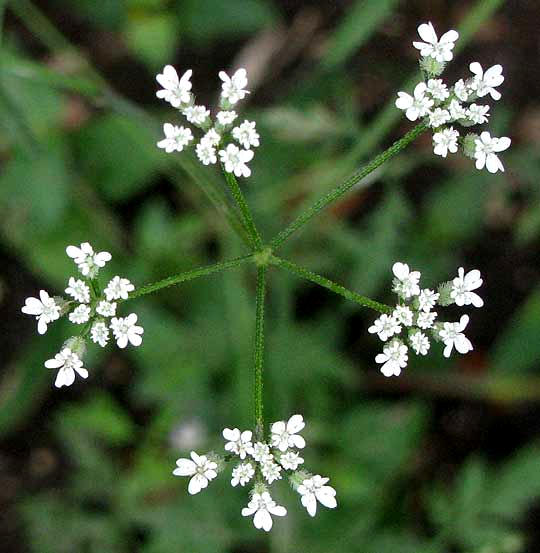
In that picture notice how the flowers of each cluster join at their bases in a way that makes the cluster flat-topped, and then stems of the various little flat-topped clusters join so that the several smaller clusters form a larger flat-topped cluster. Flat-topped flower clusters are called umbels, and when you see flowers in umbels the best bet is that you have a member of the Umbelliferae, the Parsley or Carrot Family. That's what we have here. In fact, leaves at the base of this weed are parsley-like, as shown below:
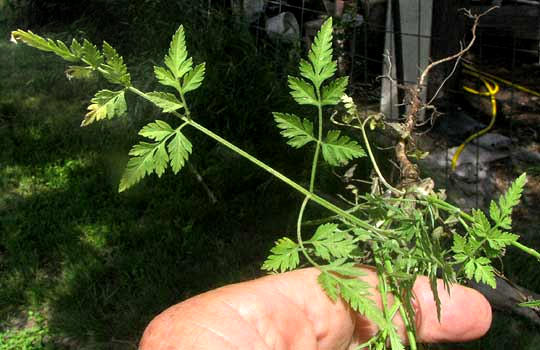
Below you can see a close-up of two flowers reminds us that blossoms in the Parsley Family, unlike most flowers, have "inferior ovaries" -- ovaries from the tops of which arise the flower's calyx, petals, stamens and style. Also typical of this family is the fact that the ovary often is equipped with spines or ridges bearing glands producing aromatic oils, so the bristly lower part of the above blossoms is normal for flowers of the Parsley Family.
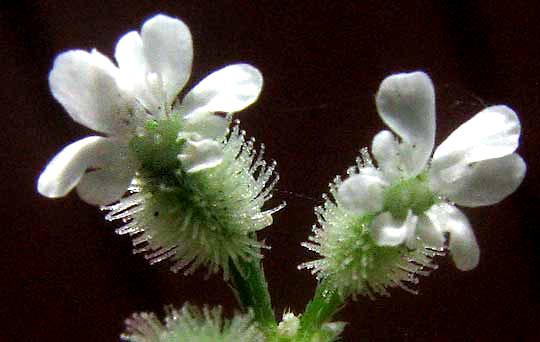
By the time this plant's fruits are mature, the spines will have grown and hardened considerably, as shown below:

Beneath the dissecting microscope, each fruit spine reveals itself as tipped with a double-pointed hook, and much smaller backward-pointing spines cloak the big spines' stems, as you can see below:
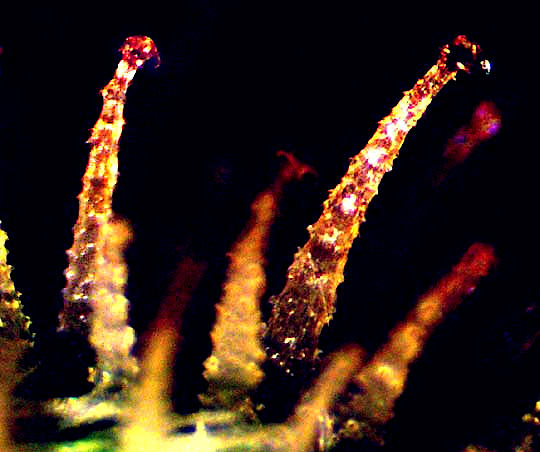
This plant is most commonly known as Hedge Parsley. It's TORILIS ARVENSIS, a native of Europe now spread worldwide. Its leaves are too small and stringy to be considered much of a food source and the species isn't noted for being medicinal. You pay attention to it later in the season, especially if you wear socks while walking through weeds. The tiny burs hook onto sock fuzz and stay there until scratched or combed off.
Despite such aggravations, this is a fine little plant, worth having as a neighbor if only because its little white sprays of flowers so prettily speckle otherwise monotonously green roadsides and fencerows.